RADIANT FLOOR ELECTRIC BOILERS
Why does Nordik Radiant only offer the Thermo 2000 boilers?
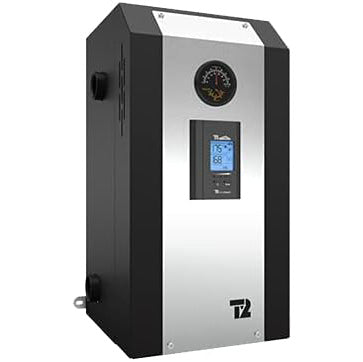
We have carefully selected the Thermo 2000 product line for multiple compelling reasons.
Firstly, their range of products is distinguished by its exceptional quality. The innovative features incorporated into their products serve as a testament to the expertise they have cultivated over four decades in the industry.
Additionally, our team greatly values the collaborative partnership we have developed with Thermo 2000. Their commitment to outstanding service is evident as they consistently provide prompt and knowledgeable responses to our inquiries, particularly during complex projects. Moreover, their after-sales service is exemplary, ensuring our customers receive the support they need long after their purchase.
Furthermore, we prioritize the convenience of our customers by maintaining a comprehensive inventory of spare parts within our warehouse. This strategic approach guarantees swift and hassle-free access to necessary components for repairs, demonstrating our dedication to delivering exceptional customer service.
In summary, our choice to offer the Thermo 2000 product line is driven by their exceptional product quality, extensive industry experience, responsive customer support, and our commitment to providing a seamless experience for our valued customers.
Which boiler power should you choose for your in-floor heating system?
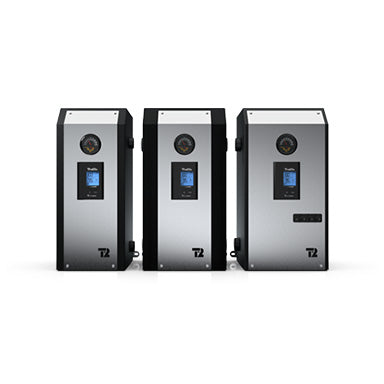
There are a few factors that can vary the power of your boiler such as the size of your building, the insulation of the building and the region where your building is located.
We recommend that you consult the professional in your area so that he can advise you on the power required for your building.
For example, in North American regions where the temperature drops to -22°F (-30°C), we will calculate about 30 Btu/ft² (95w/m²).
New construction that meets the Canadian Building Code needs approximately 22 Btu/ft² (70w/m²) during the coldest day of the year.
However, by using a calculation of 30 Btu/ft² (95w/m²), it allows for a margin of flexibility to account for potential deterioration in the building over time.
It is possible that after approximately fifteen years, the thermal efficiency of the windows may decrease or the caulking around openings may require replacement.
Note: You can use our online power calculator to get the boiler power that you need according to differents Btu/ft² scenarios here.
For projects requiring more precise evaluations, engaging the services of a thermal engineer is recommended. They can accurately calculate the energy performance of your building and provide tailored recommendations based on specific requirements.
What is the difference between a Mini BTH Thermo 2000 electric boiler and a Mini Ultra Thermo 2000 electric boiler?
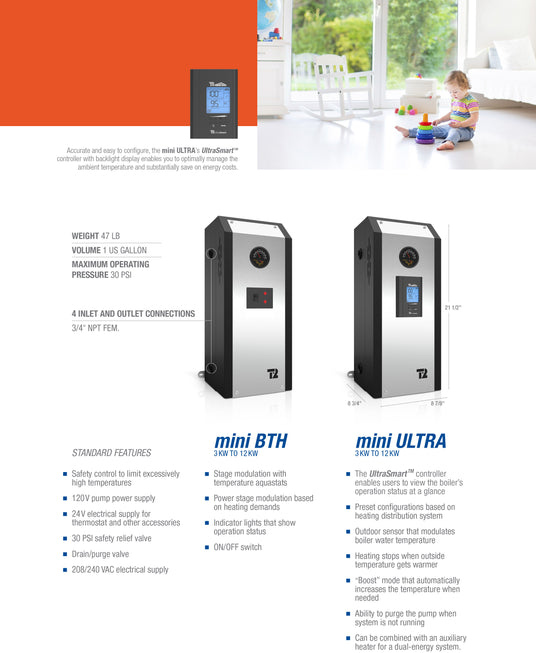
There are several differences between a Thermo 2000 Mini BTH model boiler and a Mini Ultra model.
The Mini BTH Electric boiler is much like a 1 US gallon hot water tank, the heating element(s) are controlled by an aquastat, meaning they will heat to a fixed temperature depending on the manual adjustment. On the front of the boiler, there is a switch that should be turned on in the fall when you want to start heating your building and turned off when spring arrives. With this boiler, the gallon of liquid inside will always be kept hot during the heating period.
The Mini Ultra electric boiler also contains 1 US gallon, but includes a digital controller that will operate the electric element(s). This boiler also includes an outdoor sensor that you can connect. Unlike the Mini BTH, with this probe, the temperature of the liquid will vary according to the outside temperature. So the colder it is outside, the warmer the liquid. Another difference is that this boiler does not keep its liquid hot, if no thermostat creates demand, it shuts down the electrical elements automatically.
What is the difference between a Mini Ultra boiler and a BTH Ultra boiler?
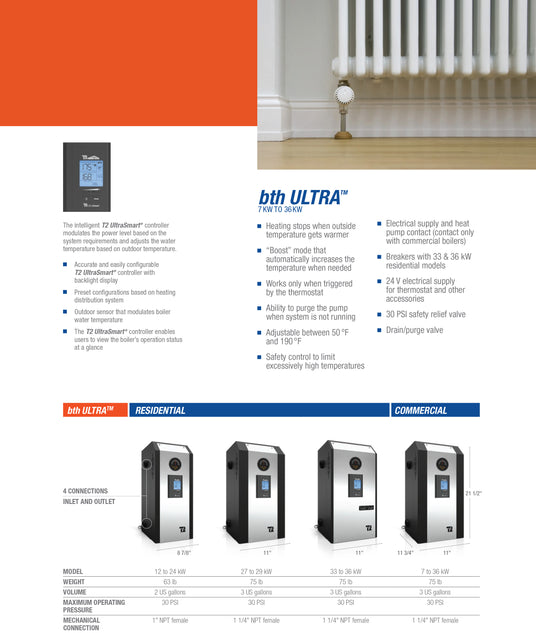
The main difference between Thermo 2000 boilers, Mini Ultra models, and BTH Ultra models is the boiler power.
In the Mini models, there are 6 different powers ranging from 3 kW to 12 kW, while for the residential BTH Ultra models, there are 9 different powers ranging from 12 kW to 36 kW.
The second difference is also the number of elements in the boiler. The Mini models have one to two elements depending on the power, whereas the BTH Ultra models have 4 to 6 elements depending on the power.
Another significant difference is the size of the boiler inlet and outlet. For the Mini models, the outlets are ¾ inch, the residential BTH Ultra models of 24 kW and below are 1 inch, and the BTH Ultra models of 27 kW and above are 1-¼ inch.
What is the recommended temperature for heating the glycol mixed liquid inside your in-floor heating system?
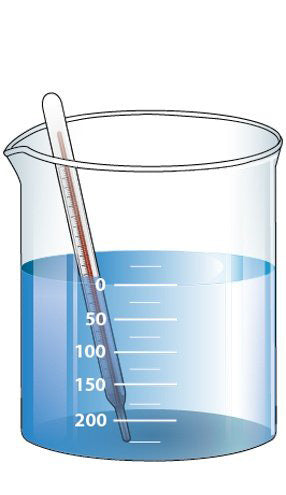
The temperature of the glycol mixed liquid will vary depending on the heating method. The ideal approach is to achieve the lowest possible liquid temperature while still ensuring the desired temperature can be reached in the building during the coldest day of the year.
In in-floor heating systems with pipes embedded in concrete, it is typically recommended to maintain a liquid temperature of around 100°F (38°C). It is important to avoid excessively high liquid temperatures in this type of system to prevent thermal shock to the concrete.
For in-floor heating systems where the pipes are not embedded in concrete, a liquid temperature of approximately 125°F (52°C) is commonly used.
For in-floor heating systems equipped with cast iron radiators, the recommended liquid temperature is around 150°F (65°C).
For baseboard in-floor heating systems utilizing hot water, the liquid temperature is typically set to around 175°F (80°C).
Note: The specific liquid temperature may vary depending on the characteristics and requirements of each individual building.
